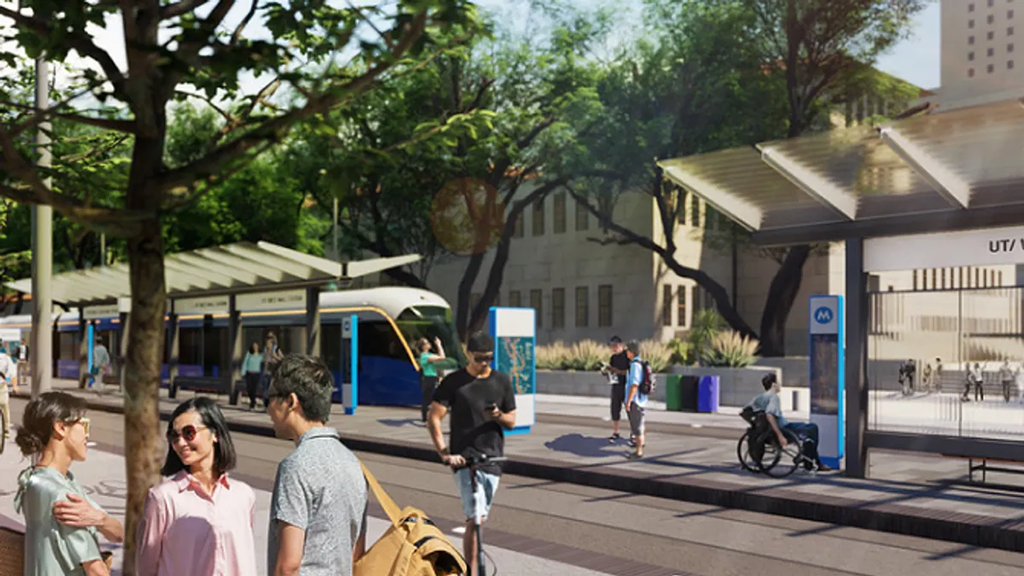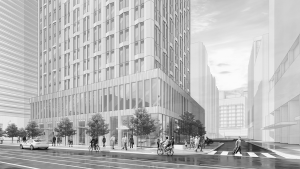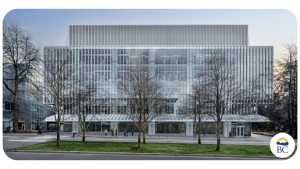The project team charged with the task of delivering phase one of Project Connect, Austin’s first light rail system, has been named.
The team, named LINC Austin, will be led by global infrastructure builder AECOM. The company describes its responsibilities as including “program management oversight and initiation, environmental services, design management, rail activation and operational readiness.”
At an estimated cost of $7 billion, phase one introduces 9.8 miles of light rail to Austin with 15 stations, enhancing regional connectivity and mobility for communities in the region.
“This critical project will transform how Austinites navigate their city, with the promise of stimulating economic growth, protecting the existing environment and promoting a sustainable future for generations to come,” AECOM says.
The delivery team also includes technology provider Parsons Corporation, engineering firms STV, Ardmore Roderick and CAS Consulting, and construction firm Turner & Townsend. Construction is scheduled to begin in 2027 with completion in 2033.
The all-electric system will integrate seamlessly with existing transit services, Parson said in its news announcement, offering high-frequency service to reduce travel time and traffic congestion.
Service in the downtown and north sections of the circuit is intended to be every five minutes during peak hours, dropping to 7.5 minutes in off-hours. Peak-hour service in the eastern and southern segments would be every 10 minutes, reducing to 15 minutes at other times. It is estimated once the light rail system is complete in eight years time, annual automobile driving in Austin will be reduced by the equivalent of 20 million miles.
Although the system will connect major destinations across the city, such as Lady Bird Lake, downtown Austin and the University of Texas at Austin, the plan currently does not include a link to Austin-Bergstrom International Airport, one of the fastest growing airports in the country.
“We get asked about the airport extension perhaps more than anything,” Jennifer Pyne, executive VP of planning community and federal programs for the Austin Transit Partnership (ATP), told local media. “It’s something that we definitely are looking at and want to pursue as soon as we can.
Current planning indicates traffic patterns will be permanently altered by road closures and lane reductions. There has also been resistance from Austin businesses which fear displacement. More than $300 million has been budgeted to relocate and compensate homes and business that will be relocated, although such payments don’t cover the financial and emotional costs.
For example, the proposed relocation of historic Austin restaurant, Dirty Dick’s, had been a local cause célèbre, and gained 24,000 petition signatures. The ATP has since rescinded the restaurant’s removal. However, other legal challenges remain.
First of all, the 9.8-mile route is less than half of what had been overwhelmingly approved by Austin voters in 2020 and lacks the subway line promised in the original proposal.
Not only has this triggered a series of lawsuits claiming “bait and switch” tactics, but it has also drawn attention to the funding model for the system that includes city property taxes and bonds. The entire issue could end up before the Texas State Legislature where previous attempts to use city-issued bonds have been challenged. However, work on the light rail plan is moving ahead despite these ongoing legal and legislative obstacles.
The ATP has countered opposition by saying the light rail line will be “an engine for jobs,” with 10,000 jobs created as part of city mobility improvements, and create access to 200,000 or more jobs when operational. Several thousand jobs will be connected directly to the construction, with many permanent positions created when the system begins operation.
The ATP also says the system requires only three per cent of the lands next to the proposed route, mostly only thin strips along existing sidewalks.
It adds, “shade trees, Texas plants and new walk and bike paths will be integrated throughout the design of the line, creating more people-friendly spaces.”
Special dampening tracks installed near an apartment complex and hotel will reduce train vibrations. Of the 600 on-street parking spaces to be lost, hundreds of new parking spaces will be established along the route, all with minimal business relocations.











Recent Comments
comments for this post are closed